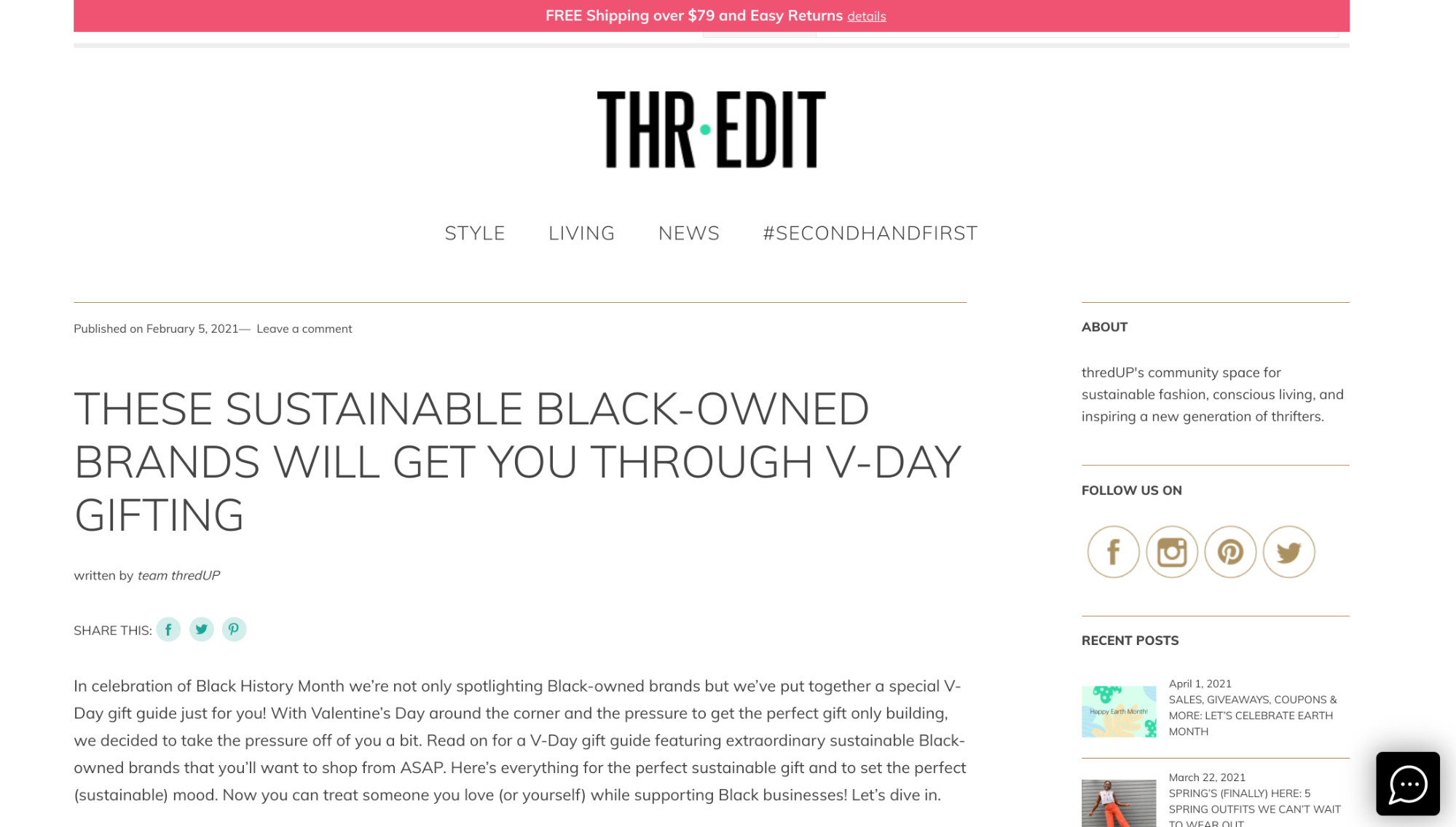If you’re running an eCommerce business, you need to be creating content for your website. Content marketing involves publishing relevant, authoritative, and engaging content that can be used to boost your SEO, earn you more leads, and grow your conversion rate. Videos, blog posts, and free tools are all examples of content people use to market their businesses!
But it’s not enough to just create any old content; in this article, we’re going to break down how you can ensure that your website content leads to sales. We’ll discuss showing your expertise, answering customer questions, keyword targeting, content promotion, and more.
Show off your expertise
One of the main benefits of creating high-quality content for your website is that you can show off your expertise. This will help you build trust with both your audience and search engines, which is great for your SEO.
Google likes to show their searchers knowledgeable sources of information; if it’s clear that you are providing quality and accurate information, they’ll give you a boost on the search engine results pages (SERPs).
You can show off your expertise by creating ultimate guides, answering common customer questions, and keeping your content relevant to your industry. Think about what makes your business stand out — what do people choose your business for? What can you do better than your competitors?

Take a look at how Million Dollar Agency showcases their expertise with their webinar series and blog. Both are full of their expert knowledge that shows they’re well-versed in the topic of digital marketing! Their webinar series, for instance, is marketed as free training — this shows viewers that this company is truly an expert, and people can learn a lot from them.

ThredUp, an online consignment store, showcases its expertise in combining fashion and sustainability on its blog. For example, they recently published an article outlining the best sustainable Black-owned businesses for jewelry, clothing, beauty, and more. This is the type of content that their fashion-forward, socially conscious customer is looking for; by outlining different businesses that share similar goals with ThredUp, they showcase their expertise in the field.
Answer the questions your target customers are asking
If you are able to anticipate your customers’ questions and answer them with your content, they’ll feel like you understand them and their concerns — this can lead to a lot more sales! To figure out what questions to answer, you can start by answering common inquiries your customer service team receives. Not only will this save them time in the long run, but your customers will appreciate that you know what their needs look like.
You can also conduct question keyword research, and Answer the Public is a great tool for this. Plugging in a relevant term will result in a series of questions that people are searching for related to the topic. For instance, typing in “content marketing” results in the questions, “how content marketing works,” “how to become a content marketer,” and more.

Take a look at how My Canada Payday answers common customer questions on their blog. The company specializes in financial lending, so they’re targeting customers who are looking for money advice and assistance. They have a piece explaining in detail how student loans work in Canada. They provide information about federal loans, grants, provincial loans, private loans, and more.

Or take a look at how Chewy, an online pet retailer, answers the question, “can dogs eat apples?” Pet owners want to know that they can trust stores and brands with the health and safety of their pets before they spend money with them. Articles like this show off Chewy’s expertise and reassure customers that they know what they’re talking about.
Target the right keywords
It’s also vital that you target the right keywords with your content; this will help ensure your content ranks for the right queries so you reach the most suitable people. If you’re new to search engine optimization, or SEO, you might not be familiar with how this works. This is where keyword research tools come in handy!
Google Keyword Planner is a great place to start with keyword research. Start by plugging in a search term that’s relevant to your business. The Keyword Planner will then provide you with a list of keyword ideas that you can target in your content. You might want to start by targeting low-competition keywords to ensure you reach the top of the SERPs and are shown to the most relevant searchers. They might get fewer monthly searches, but you’re much more likely to get the right kind of traffic with more specific keywords.
Keep in mind that, with your content, you want to be targeting informative keywords rather than commercial ones. Informative keywords are things that people search when they are trying to learn something — think something like “can my dog eat apples?” as shown above. Commercial keywords, however, are what people plug into a search engine before making a purchase. “Buy dog treats online” would be an example of a commercial keyword.
Help your customers make an informed purchase
People will be more likely to buy from you if they are confident they’re making an informed purchase; your content can help ensure this. By creating buying guides, competitor comparison pieces, case studies, or user guides, you can help your customers make informed buying decisions.

Take a look at how Wayfair does this with their desk buying guide. With furniture, it can be difficult to know where to start; there are all sorts of different styles, sizes, materials, designs, and functions that can be overwhelming. Wayfair knows this and helps their customers make a decision by outlining the different desks they offer to help customers make a decision that best fits their needs.

Case studies can also be used to help a customer make a decision; it shows what kinds of people or business you’ve already helped, so they can work out if your products or services will be right for them. BlueLeadz does this well with their lead generation case study. They outline a story about one of their clients, the problems they had before coming to BlueLeadz, and how they were able to come to a solution.
Include a clear call-to-action
Every piece of content you create should end with a strong call-to-action or CTA. A CTA is a phrase (often put on a clickable button) that tells the customer exactly what you want them to do next. “Sign up,” “try for free,” and “buy now” are all common examples of CTAs. After someone consumes your content, what do you want them to do next? You can ensure that your instruction is effective by making it succinct, direct, and very obvious to the customer.

Looka, an online logo designer, has a very effective CTA on their website at the bottom of all of their blog posts. Notice how it stands out at the bottom of the page, and it’s very clear to the customer what they should be doing next: plug in your company name and click “Get started” to begin making your new logo.

Better Proposals has also included an excellent CTA at the bottom of their guide to creating great business proposals. Here, the supporting copy helps make the CTA so effective; they invite the reader to join the smartest entrepreneurs in business and impress their clients. The “TRY IT FREE” button stands out and helps seal the deal. Customers know what to do next and why they should give Better Proposals a shot.
Create free resources your audience will find useful
Free resources are great lead magnets! They can attract the right people to your website, and build trust with your ideal customers.
Think about how you can provide something of value to your customers for free. If you have a lot of blog content, for instance, you could compile it into a free eBook. If you offer different service packages, you could also create a calculator that takes customer information and offers them a price quote.
Take a look at how SEMRush does this with an eBook. In The Ultimate Guide for Content Marketers, they discuss how to optimize existing content, earn backlinks, and more. In order to get the PDF, a viewer has to plug in their contact information. This puts more people on the company’s mailing list and can encourage them to make a purchase with SEMRush later.
Outgrow, an interactive digital marketing agency, also has a great series of calculators and quizzes that help attract the right people and build a rapport with their target customers. One example is their calculator designed to help website visitors to determine how much they should spend on paid advertising. Providing calculators like this helps draw customers in and earn their trust.
Promote your website content on social media
It’s not enough to just create content. You have to promote it to help ensure that the right people are finding it. Social media is a great place to do this! So, promote your content on social media regularly.
You can also build relationships with your customers and other influencers in your niche through comments, shares, and likes. Plus, social media analytics tools will make it much easier for you to batch schedule posts, analyze what content is doing well, find the best time to post, and more.
Keep in mind that you don’t need to use every social media platform to effectively promote your content. Different platforms have different uses. Pinterest and Instagram are great for visual businesses but, if you’re looking for a platform you can use to convince people to visit your website, Twitter is a good option. Facebook has, by far, the largest social media base, while LinkedIn is great for B2B marketing and promoting professional content. For further reading, take a look at Optinmonster’s guide to the best social media platforms for your business.
Summary
You got into business to make money, and your content can help you do just that.
Keep these content marketing tips in mind, as they’ll help you to generate more leads, boost your sales, and grow your business. Free tools, expert content, social media promotion, and more can all help you to secure more conversions. So, go ahead and start creating — it won’t be long before you’re reaping the benefits.

